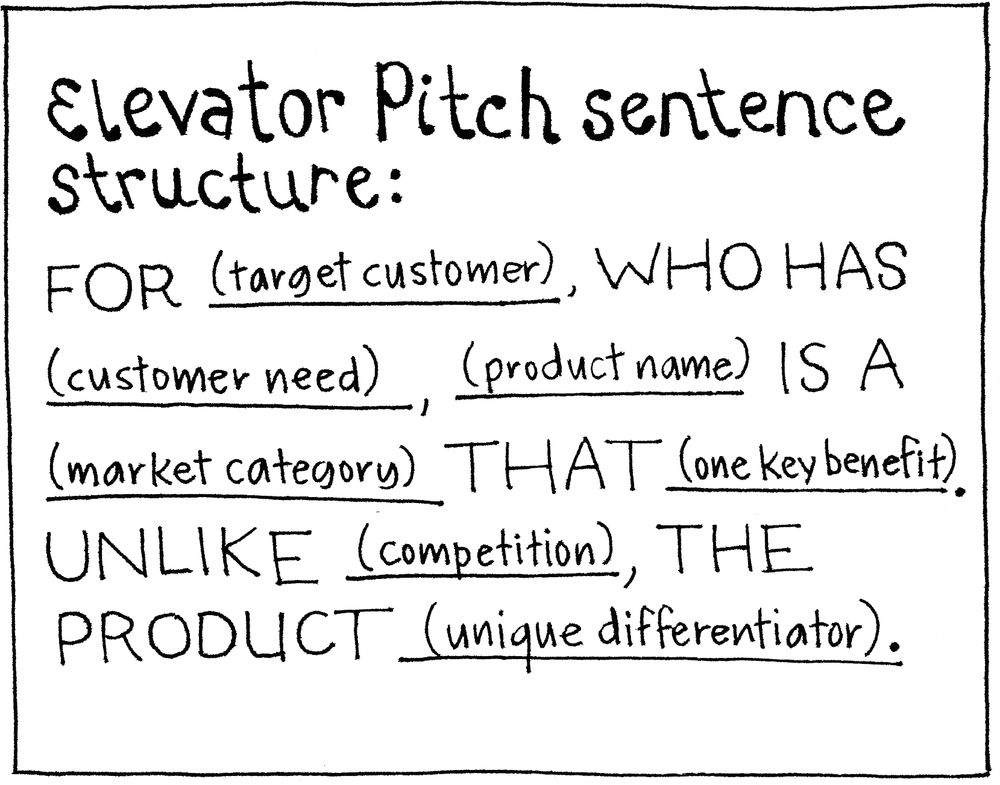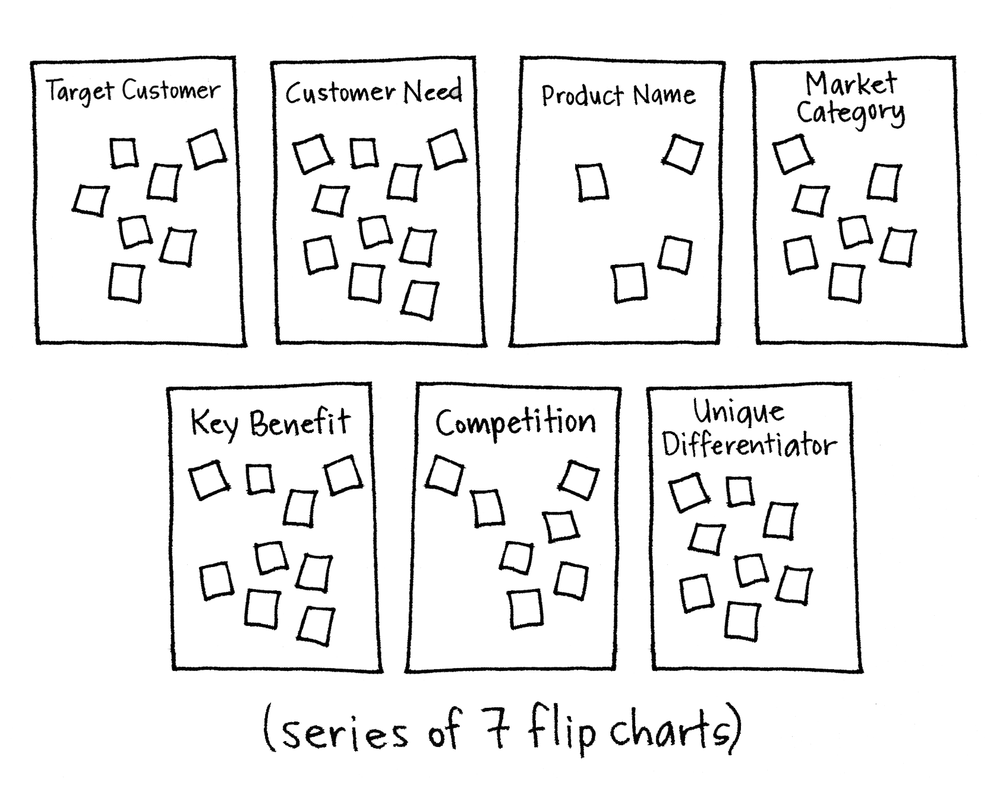What has been a time-proven exercise in product development applies equally well in developing any new idea: writing the elevator pitch. When developing and communicating a vision for something, whether it's a new service, a company-wide initiative, or just a good idea that merits spreading, a group will benefit from going through the exercise of writing their elevator pitch.
Often this is the hardest thing to do in developing a new idea. An elevator pitch must be short enough to deliver in a fictional elevator ride but also contain a compelling description of the problem you're solving, who you'll solve it for, and one key benefit that distinguishes it from other ideas.
Save at least 90 minutes for the entire exercise, and consider a short break after the initial idea generation is complete before prioritizing and shaping the pitch itself. Small working groups will have an easier time coming to a final pitch; in some cases it may be necessary to assign one person with follow-up accountability for the final wording after the large decisions have been made in the exercise.
Going through the exercise involves both a generating and a formative phase. To set up the generating phase, write these headers in sequence on flip charts:
Who is the target customer?
What is the customer need?
What is the product name?
What is its market category?
What is its key benefit?
Who or what is the competition?
What is the product's unique differentiator?
These will become the elements of the elevator pitch. They are in a sequence that adheres to the following formula.
To finish the setup, explain the elements and their connection to each other.
The target customer and customer need are deceptively simple: any relatively good idea or product will likely have many potential customers and address a greater number of needs. In the generative phase, all of these are welcome ideas.
It is helpful to fix the product name in advance—this will help contain the scope of the conversation and focus the participants on "what" the pitch is about. It is not outside the realm of possibility, however, that useful ideas will be generated in the course of the exercise that relate to the product name, so it may be left open to interpretation.
The market category should be an easily understood description of the type of idea or product. It may sound like "employee portal" or "training program" or "peer-to-peer community." The category gives an important frame of reference for the target customer, from which they will base comparisons and perceive value.
The key benefit will be one of the hardest areas for the group to shape in the final pitch. This is the single most compelling reason a target customer would buy into the idea. In an elevator pitch, there is no time to confuse the matter with multiple benefits—there can be only one memorable reason "why to buy." However, in the generative phase, all ideas are welcome.
The competition and unique differentiator put the final punctuation on the pitch. Who or what will the target customer compare this idea to, and what's unique about this idea? In some cases, the competition may literally be another firm or product. In other cases, it may be "the existing training program" or "the last time we tried a big change initiative." The unique differentiator should be just that: unique to this idea or approach, in a way that distinguishes it in comparison to the competition.
Once the elements are understood, participants brainstorm ideas on sticky notes that fit under each header. At first, they should generate freely, without discussion or analysis, any ideas that fit into any of the categories. Using the Post-Up technique, participants put their notes onto the flip charts and share their ideas.
Next, the group may discuss areas where they have the most trouble on their current pitch. Do we know enough about the competition to claim a unique differentiator? Do we agree on a target customer? Is our market category defined, or are we trying to define something new? Where do we need to focus?
Before stepping into the formative phase, the group may use dot voting, affinity mapping, or another method to prioritize and cull their ideas in each category.
Following a discussion and reflection on the possible elements of a pitch, the group then has the task of "trying out" some possibilities.
This may be done by breaking into small groups, as pairs, or as individuals, depending on the size of the larger group. Each group is given the task of writing an elevator pitch, based on the ideas on the flip charts.
After a set amount of time (15 minutes may be sufficient), the groups reconvene and present their draft versions of the pitch. The group may choose to role-play as a target customer while listening to the pitch, and comment or ask questions of the presenters.
The exercise is complete when there is a strong direction among the group on what the pitch should and should not contain. One potential outcome is the crafting of distinct pitches for different target customers; you may direct the group to focus on this during the formative stage.
Don't aim for final wording with a large group. It's an achievement if you can get to that level of completion, but it's not critical and can be shaped after the exercise. What is important is that the group decides what is and is not a part of the pitch.
Role play is the fastest way to test a pitch. Assuming the role of a customer (or getting some real customers to participate in the exercise) will help filter out the jargon and empty terms that may interfere with a clear pitch. If the pitch is truly believable and compelling, participants should have no problem making it real with customers.
The elevator pitch, or elevator speech, is a traditional staple of the venture capital community, based on the idea that if you are pitching a business idea it should be simple enough to convey on a short elevator ride.

